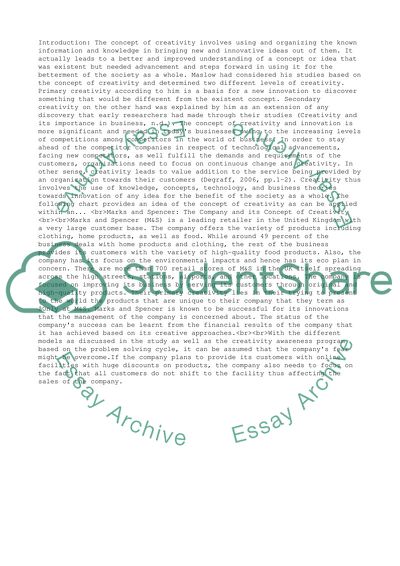Cite this document
(“Developing Creativity for Business Essay Example | Topics and Well Written Essays - 3000 words”, n.d.)
Retrieved from https://studentshare.org/business/1395536-developing-creativity-for-business
Retrieved from https://studentshare.org/business/1395536-developing-creativity-for-business
(Developing Creativity for Business Essay Example | Topics and Well Written Essays - 3000 Words)
https://studentshare.org/business/1395536-developing-creativity-for-business.
https://studentshare.org/business/1395536-developing-creativity-for-business.
“Developing Creativity for Business Essay Example | Topics and Well Written Essays - 3000 Words”, n.d. https://studentshare.org/business/1395536-developing-creativity-for-business.


